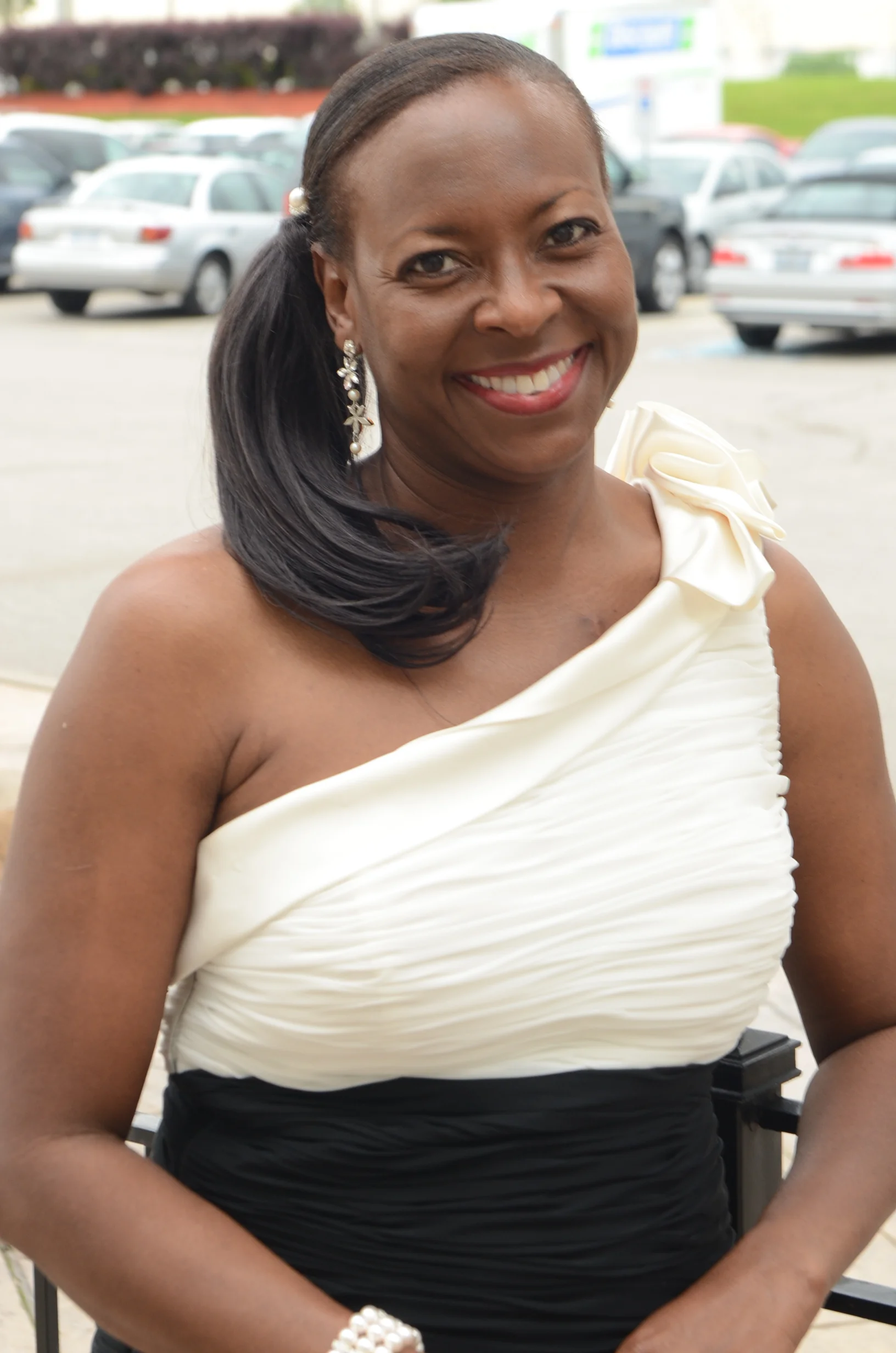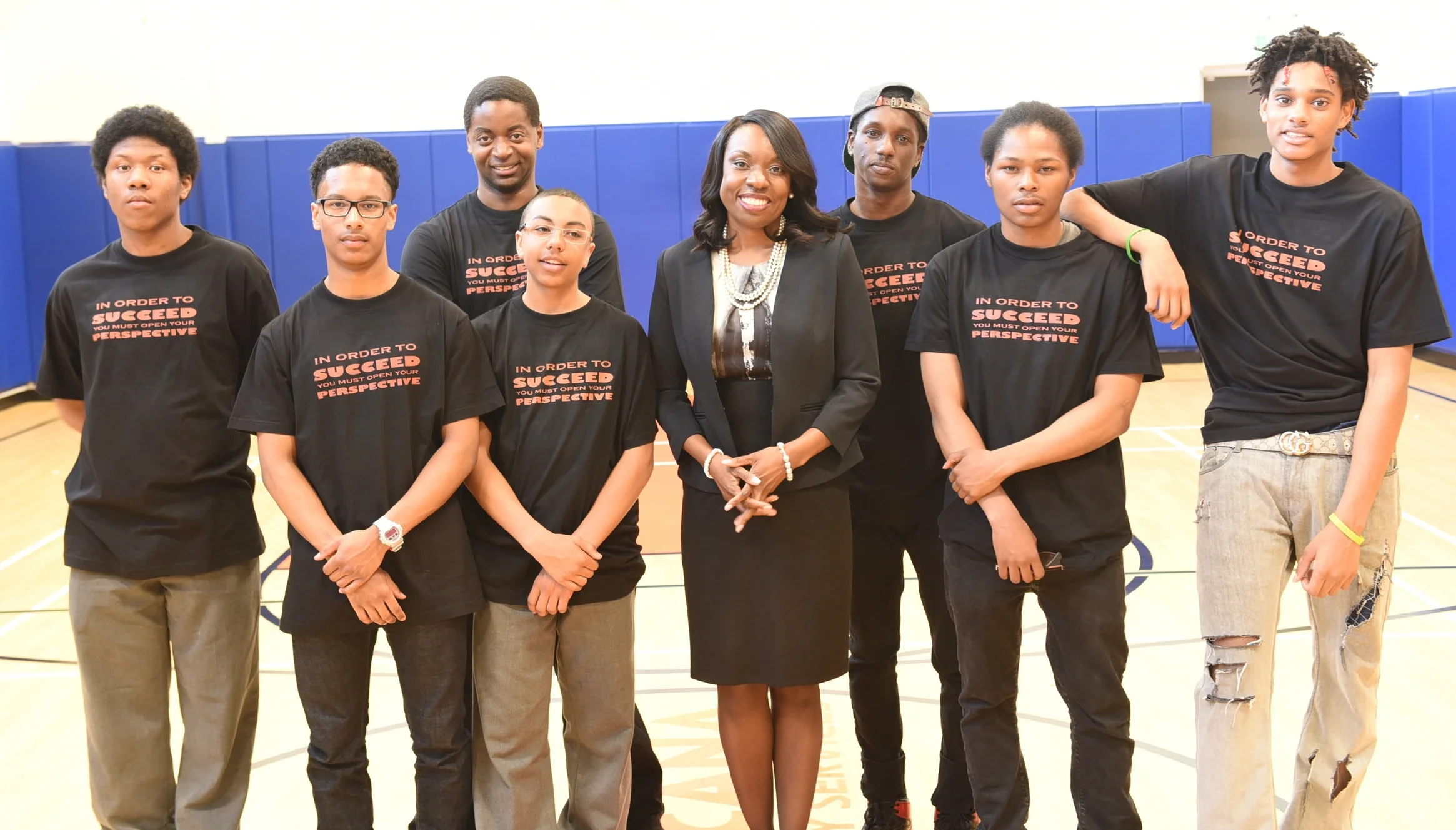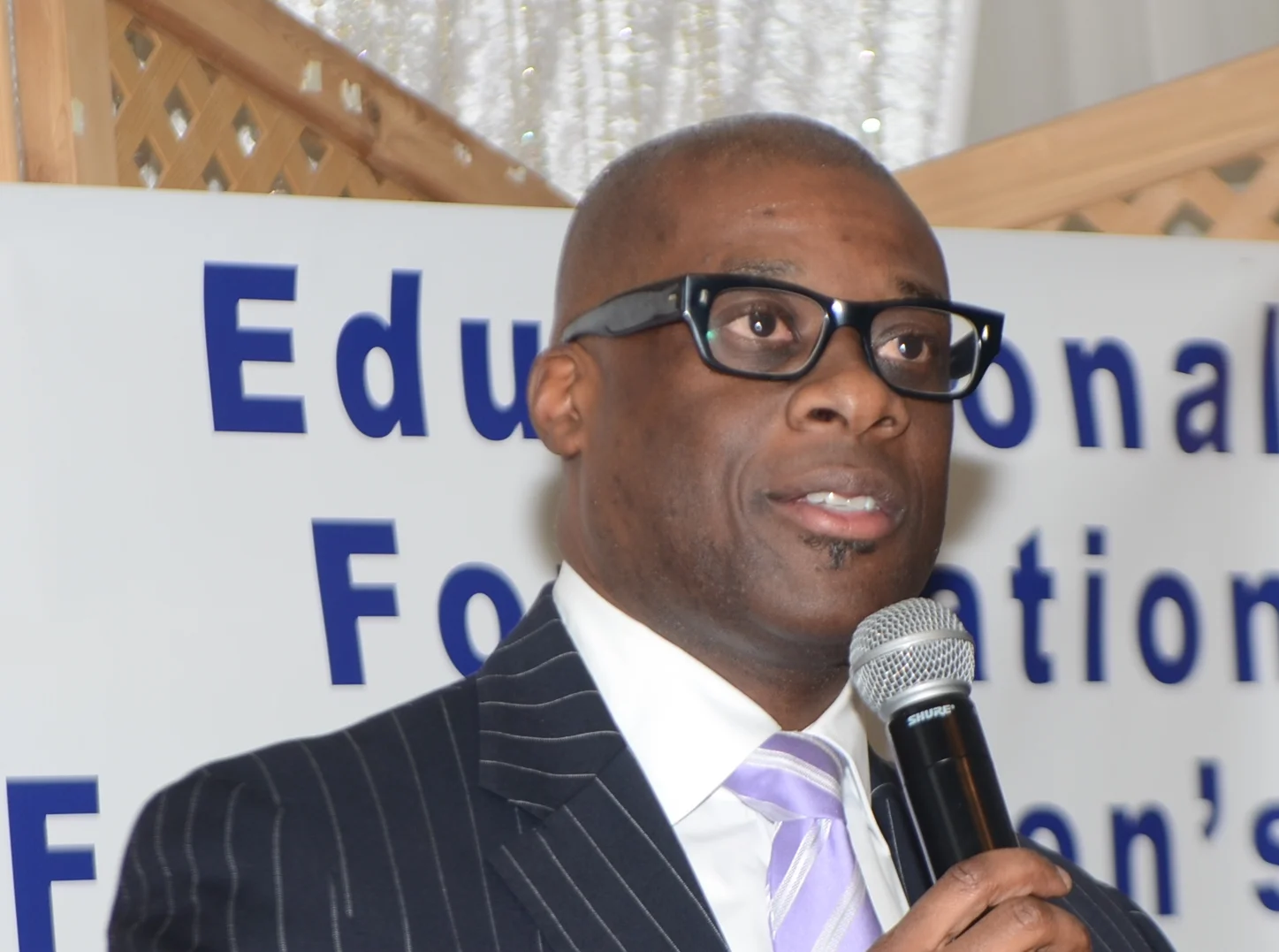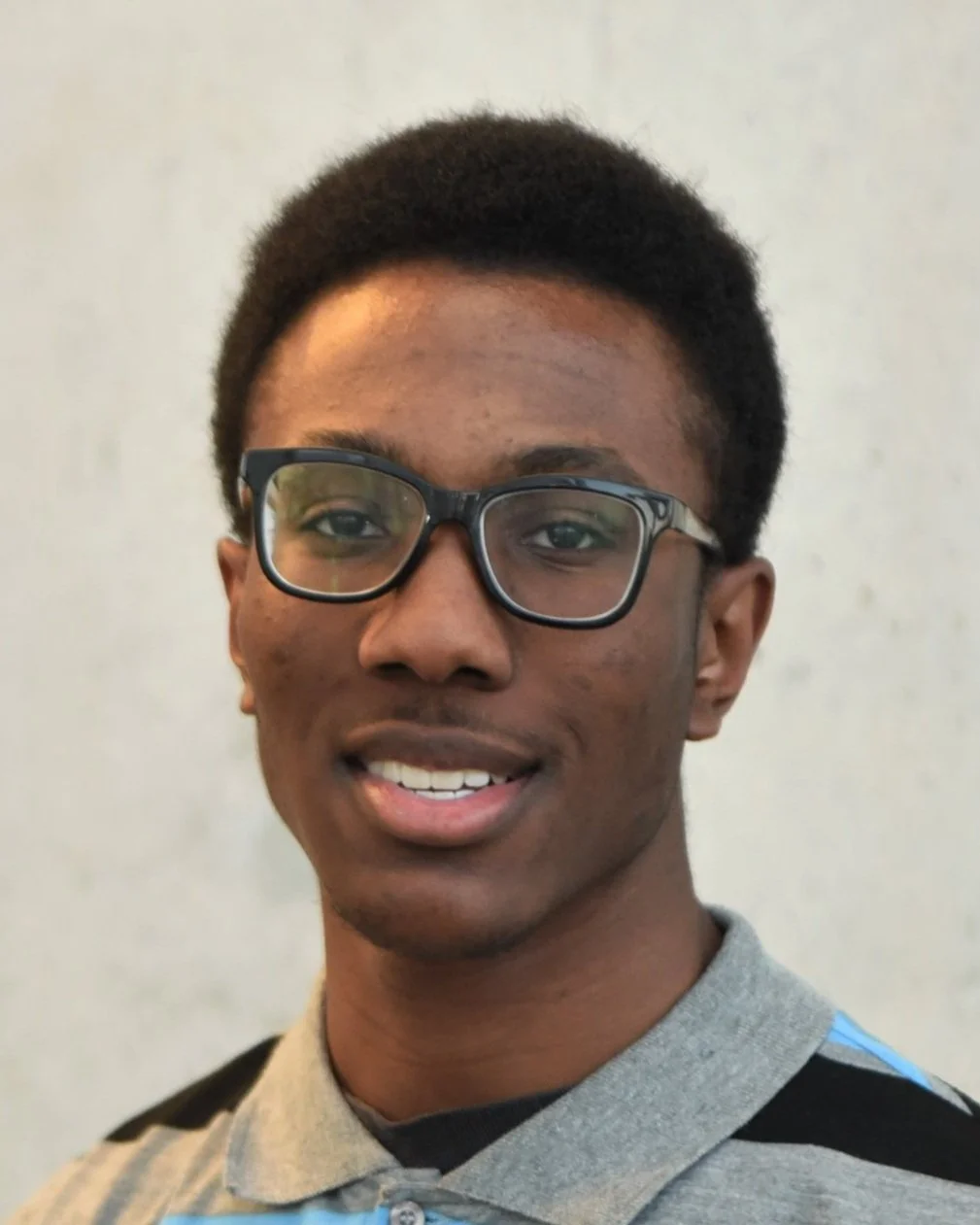Race-based disparities for Black youths to be eliminated
April 4, 2017
Devon Jones knows and appreciates the value of mentorship and guidance.
Arriving from Jamaica at age 14, he found that transitioning to a new environment could be extremely challenging.
Jones struggled with the school curriculum and the issue of identity until he met Centre for Addiction & Mental Health (CAMH) Transformative Global Health office director Akwatu Khenti during a Grade 11 class presentation at Georges Vanier Secondary school.
Khenti, among other uplifting lessons imparted, reminded the students of the significant contributions that people of African descent have made to humanity and society.
That was a defining moment in the life of Jones who pursued teaching as a profession and has been at Brookview Middle School in the Jane & Finch community for the last 17 years.
With a high percentage of students at his and other area schools underachieving in class, particularly Black boys from single-parent homes, Jones co-founded the Youth Association for Academics, Athletics & Character Education (YAAACE) program to empower youths with tools and skills to become productive society members. He also started a transitional school program that helps teenagers adjust to life before re-entering the classroom.
Fully aware of the myriad challenges Black youths face in the city’s designated priority neighbourhood, Jones had every reason to attend a roundtable discussion at Tropicana Community Services Organization last week where the province’s Minister of Children & Youth Services Michael Coteau launched the Ontario Black Youth Action Plan (OBYAP).
As part of the ‘A Better Way Forward: Ontario’s 3-Year Anti-Racism Strategic Plan’, the four-year $47 million OBYAP is intended to support 10,000 Blacks children, youth and their families in schooling, post-secondary education and employment as well as those in conflict with the law.
At the core of the plan is eliminating systemic race-based disparities for Black youths.
Jones, who has seen first-hand the physiological and psychological impact of racism and discrimination, is confident the new plan will work and help save lives.
“Advocacy starts with empathy and leadership,” he pointed out. “Part of the problem with bureaucracies is that there are people who are knowledgeable and well-intended, but somehow fail to get done what they say they are going to do. With Michael (Coteau) and Danavan Samuels (the manager of the City of Toronto’s Healthy Kids Initiative and former senior policy analyst with the Ministry of Children & Youth Services) at the forefront of this new initiative, there is a community aspect driving this new plan and I am optimistic it will work.”
While several of Jones’ students are leading successful careers, a few didn’t make it out of high school and were victims of gun violence.
Grade Nine student Jordan Manners was fatally shot at C.W Jefferys Collegiate Institute a decade ago while 15-year-old St. Aubyn Rodney was gunned down in a Jane & Finch apartment in February 2013.
Jones said 151 young people, the majority Black boys, have succumbed to senseless gun violence in the city since Manners’ death in May 2007.
“The statistics are startling, so something has to work at the end of the day,” he said. “Many young people want to be successful, but they have to be given opportunities. Far too many of them are residing in tough environments that are counter-productive to engagement and opportunity. These are environments with a different sub-culture, reality and social outcomes. As leaders, we have to do our best to undermine the negativity inherent in these communities. You have youths living in these neighbourhoods that are prone to violence. This is generational stuff that many of them inherited.
Jones, who received honourable mention in last year’s Toronto Star Teacher of the Year Awards, noted that it’s going to take ‘boots on the ground’ and ‘forward-thinking people’ to change the negative culture.
“The inherent danger, though, is reacting to youths,” he added. “We have to be proactive and address the issues. These youths have to be reached at a very young age. We can’t wait for them to start floundering academically and become disengaged. We have to get to them early with a plan. Everyone has to be on a constructive trajectory and we have to micromanage this process. When they reach 14, 15 and 16, the police know exactly where they are and micromanage them because it’s obvious they pose a huge risk to public safety.
“We have to be proactive and put the infrastructure in place. It’s not a daunting task because the ones we have done it with in a very comprehensive way are successful. But there are so many of them and very few of us. I hope the mandate of this new government objective is to get more out there that can accommodate these young people.”
The $47 million is the single largest commitment ever made by the province that’s dedicated to Black youths.
Coteau said the investment is necessary since there are about 70,000 young people who are not working and aren’t in schools and training programs.
“This is a real plan to fix a real problem,” said the former Toronto District School Board trustee. “We are talking about young people with the potential to go out and do so many incredible things. We need to put in place the support necessary to provide them with opportunities to reach their full potential. We know there are many barriers that are preventing our young people from getting to where they want to go. Many of these barriers are symptoms of systemic racism which has been deeply implanted into the institutions and organizations that are really there to protect and advance us. In many ways, they don’t do that.”
Specific initiatives in the plan will be developed based on discussions with the community and through an implementation steering committee to ensure that recommendations from Black community leaders are reflected in ongoing work.
“The plan has been set up in a way that will complement and work with the Anti-Racism Directorate and other ministries,” said Coteau who supported the establishment of the controversial Africentric Alternative School that opened in September 2009. “We need to do a better job of collecting disaggregated race data…I am hoping that we can put forward a collective impact model for organizations that are already receiving money and are working on the same causes.”
He said the addition of youth outreach workers in Black communities to support young people, innovative programming to support those already in place and providing opportunities to support career paths are going to be integral components of the new plan.
“When I go to robotic competitions, I don’t see any Black youth there,” Coteau, the former executive director of AlphaPlus which a provincially funded organization that provides expertise to support adult educators through research, information and training on innovative learning technologies, pointed out. “Those are the future engineers and scientists and we have to find a way to get Black kids into those programs so they can access the jobs of tomorrow.”
New investments will be made available in the Greater Toronto & Hamilton Area, Ottawa and Windsor.
Coteau said a decision hasn’t been made as to who is going to get funding.
“What we are doing today is looking for ways to bring programs together, support programs that exist and build capacity through stability and good decision-making,” he added.






